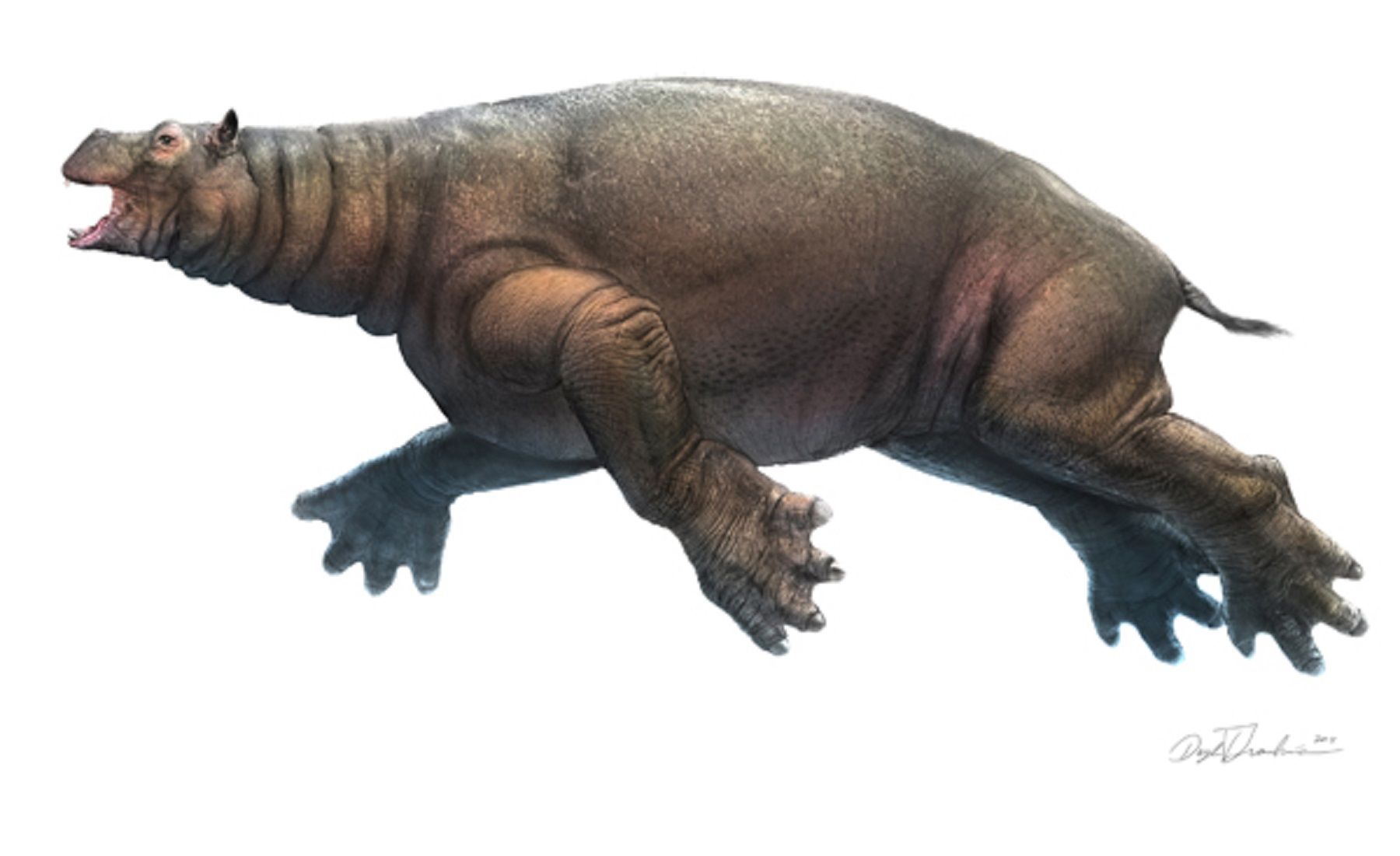Paleontologist from Natural History Museum of Los Angeles County has described an odd new hippopotamus-like animal that lived in what is now California about 10.5 million years ago.

This artwork shows a juvenile Neoparadoxia cecilialina in swimming posture. Image credit: Doyle V. Trankina.
The ancient creature, named Neoparadoxia cecilialina, belongs to Desmostylia, an extinct order of marine mammals whose closest living relatives are elephants, sea cows and manatees.
Desmostylians were large-bodied herbivores with enhanced adaptations for life in water and bulk aquatic feeding.

They lived around the margins of the North Pacific Ocean from the Oligocene until the end of the Miocene, 32.5 to 10.5 million years ago.
A 10.5-million-year-old nearly complete skeleton of Neoparadoxia cecilialina was collected from the Monterey Formation in Orange County, southern California. The animal measured 8 feet long (2.44 m) and was a juvenile when died.

“Based on life history data for living common hippos (Hippopotamus amphibius), the sex of the individual cannot be determined. It might have been approximately 11 years old when it died was still a juvenile, and could have attained an adult body length of 2.73 m,” Dr Lawrence Barnes from Natural History Museum’s Department of Vertebrate Paleontology wrote in a paper published in the Nat. Hist. Museum of Los Angeles County Contributions in Science (full paper).
Among known desmostylians, Neoparadoxia cecilialina is most closely related to the middle Miocene desmostylian Paleoparadoxia repenningi, discovered in 2007.

Reconstructed skeleton of Neoparadoxia cecilialina. Image credit: Lawrence Barnes.
The name of the newly established genus, Neoparadoxia, is a combination of the Latin word neo (new) and paradoxia, part of the generic name Paleoparadoxia.

The species name, cecilialina, honors Cecilia and Alina Perlstein, for their active support of the Natural History Museum of Los Angeles County and of its programs in vertebrate paleontology
Neoparadoxia cecilialina‘s skeleton is now exhibited in the Age of Mammals hall of the Natural History Museum of Los Angeles County.
Source: sci.news








